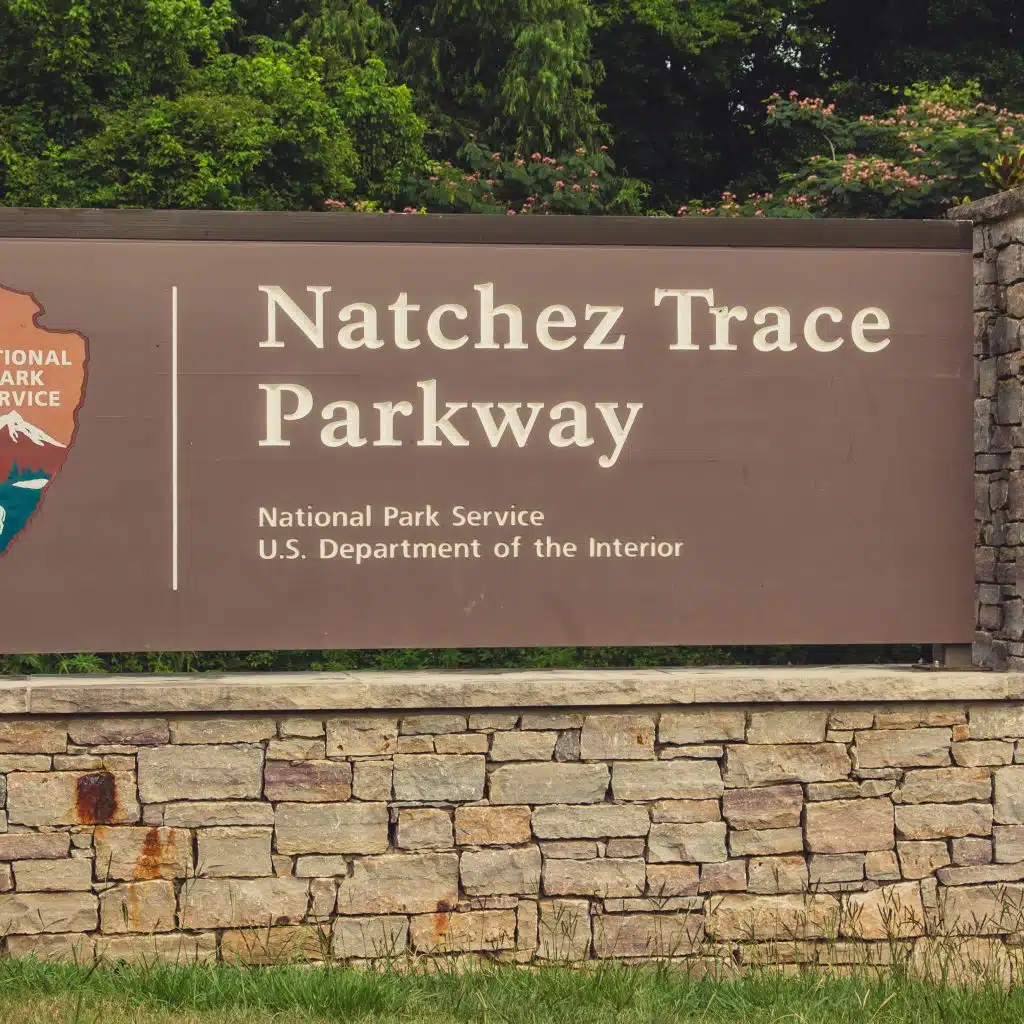For Mississippians, the Natchez Trace Parkway is such an ever-present part of our world that we often forget just how unique it really is.
First of all, it’s important to note what a significant role the Natchez Trace played in early American history. In fact, this ancient travel corridor, which currently runs from Nashville, Tennessee, to Natchez, Mississippi, is one of the oldest trade routes in North America.
It was first forged as a series of interconnected foot trails trod by various American Indian groups, including the Natchez, Chickasaw, and Choctaw. Archaeological finds relay a cultural timeline of these groups and even earlier inhabitants living and trading along this route for thousands of years, making it a virtual treasure trove of history.
According to the National Park Service website, “The Parkway links more than 350 archeological sites and 22 burial and ceremonial mounds, including Emerald Mound, the second-largest mound in the United States.”
Also of note, at least four points on the Trace intersected with the Trail of Tears, the pathway that over 60,000 American Indians followed when they were forced to leave their homelands in the years between 1830 and 1850.
Throughout American history, the Natchez Trace has been traversed by rich men, poor men, and everyone in between. As such, the Trace was always a favorite for bandits and robbers seeking easy targets among its unsuspecting travelers.

Photo credit: NPS.gov
It has also been used as a shipmen’s route between waterways, a preacher’s path for evangelism, and sadly, a slave trader’s road to quick wealth, and a Civil War crossway to multiple bloody battlegrounds.
Honestly, the Natchez Trace is a pretty accurate picture of America, the good, the bad, the ugly, and the beautiful, especially the beauty of nature.
Covering 444 miles, the Natchez Trace Parkway encompasses the actual Natchez Trace roadway and 400 feet of additional land on either side of that roadway. A diverse menagerie of wildlife resides there, and many of those animals can be spotted with keen eyes while traveling the Trace.
It is not uncommon to see deer, squirrels, or foxes crossing the Trace, but with right at 135 species of mammals recorded throughout the Parkway, it is possible to see a Louisiana Black Bear or even a bobcat. Plus, over 25 species of amphibians have been documented at some point along the Natchez Trace Parkway, including 15 species of frogs. And as for reptiles, 46 species are known to live there, counting 25 species of snakes – three of which are venomous.
Perhaps most amazing, wildlife experts and bird enthusiasts have documented over 135 species of birds on the Trace. Some live there year-round, while others are migratory. But visitors might encounter ducks, raptors, woodpeckers, and wetland waders. So, keep an eye out for the brilliant blue of the Indigo Bunting and listen for the gobbles of a rafter of turkeys. (Believe it or not, they can be heard nearly a mile away.)
But for those who prefer to keep the wildlife at bay, or at least, outside the car, the Trace offers a variety of other activities for both tourists and Mississippi residents. On its Natchez Trace Parkway Facebook page, the Parkway Visitor Center in Tupelo has an entire calendar of events planned for April, including a dulcimer music performance, a solar eclipse viewing, and a pioneer craft demonstration. At natcheztracetravel.com, guests can find an additional list of upcoming activities going on at points near the Trace – all the way from Natchez to Nashville.
So, be sure to take advantage of the rich resources and assorted opportunities the Natchez Trace Parkway offers Mississippians.
Adventures await!